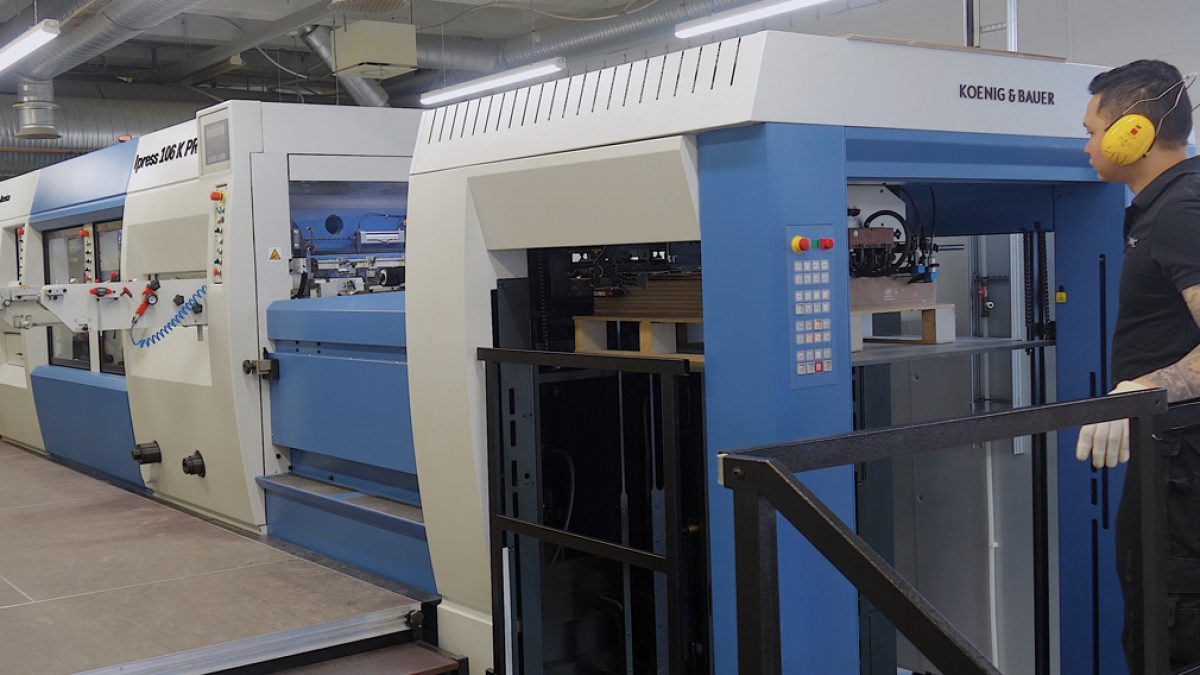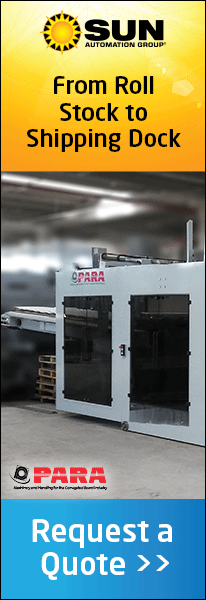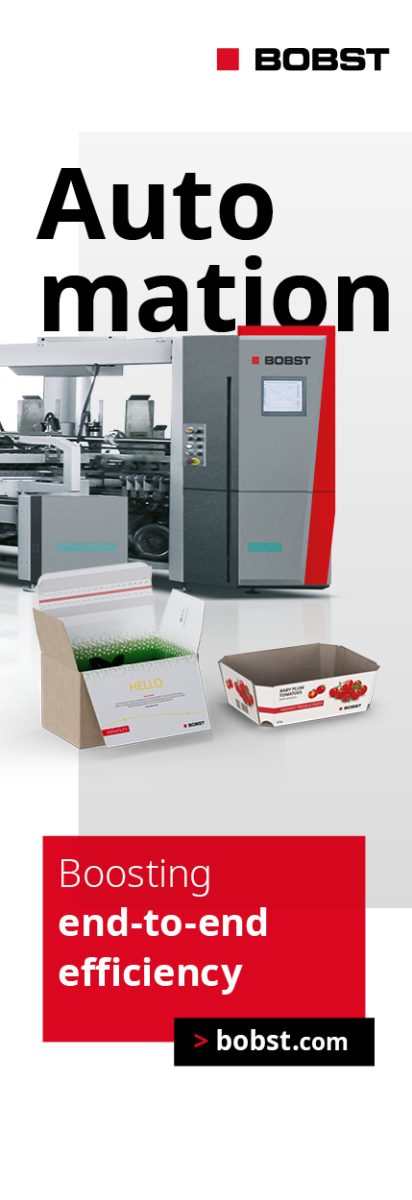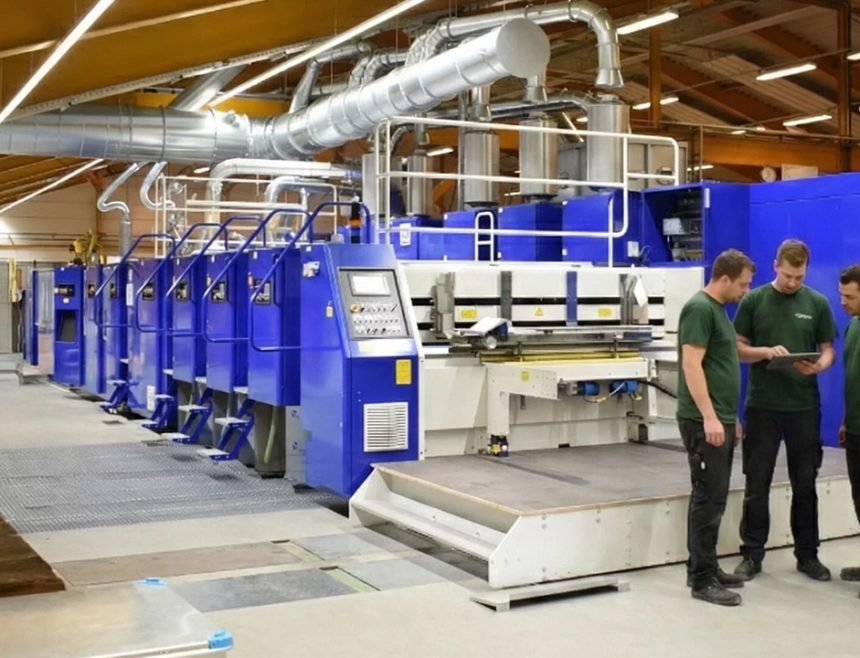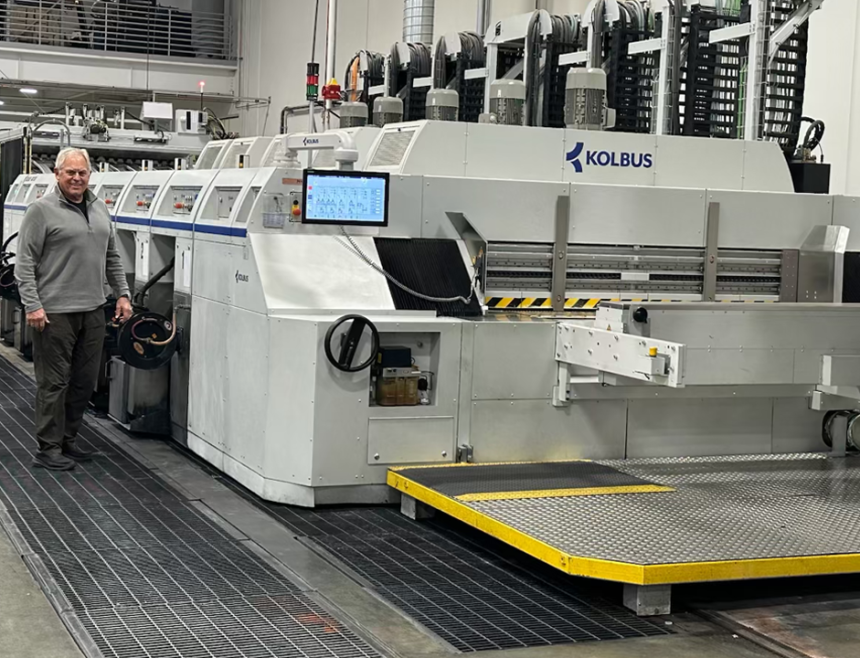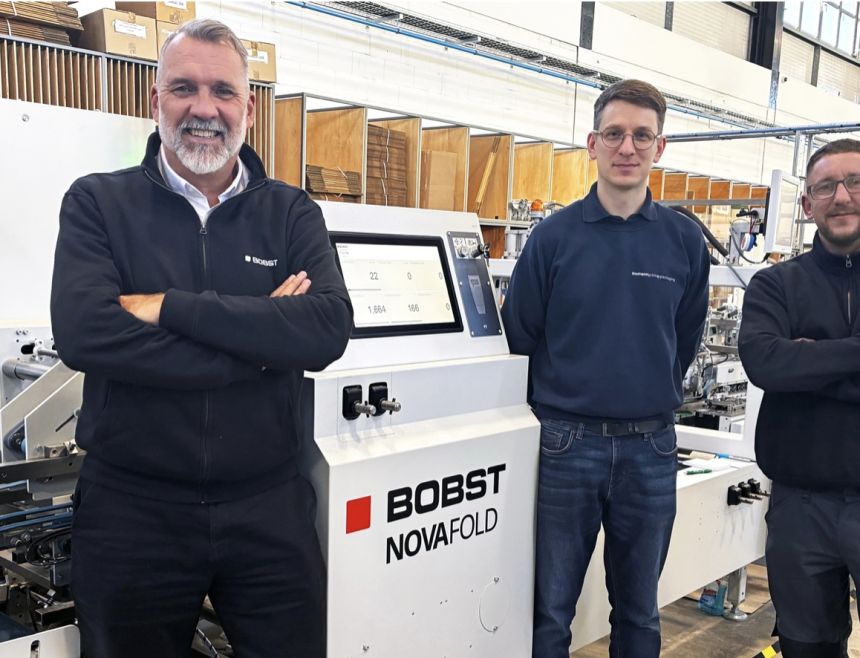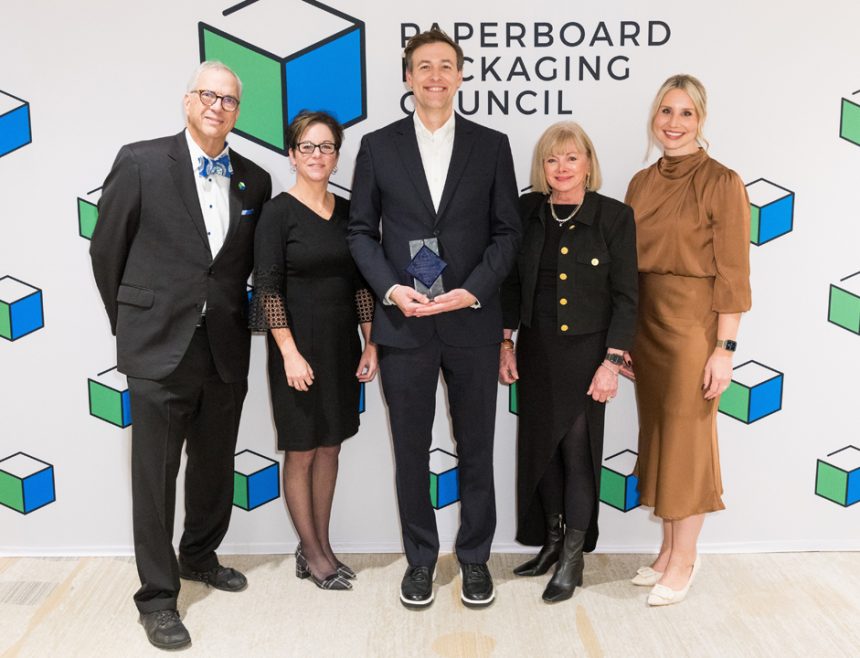Situated on the Gulf of Bothnia, almost 300 miles north of the Finnish capital, Helsinki, is a highly efficient box production company that specialises in litho-lam production of E- and F-flute corrugated packaging. Founded in 1990 by Nils Lundgren and Pekka Lemberg, Orapac is now owned and managed by dynamic entrepreneur Fredric Tidström who, along with a staff of 25, produce work largely for the international markets of its export-orientated customers – Finland having only a small volume requirement from its population of 5.5 million.
Early days saw print production carried out on two-colour presses before moving into multi-colour production to cater for changing market demand. On the corrugated side, Spanish manufacturer IOBox was the preferred choice for their litho-laminator back in 2005 and again in 2013 – but the one manufacturer that has enjoyed consistent faith from Orapac over the years is Iberica, from whom the company has acquired five die cutters – the latest being a Koenig & Bauer Iberica Ipress 106 K PRO model, installed at the beginning of 2019.
Managing Director Fredric Tidström commented, “More than 90% of our output is E-flute laminated with offset litho printed sheets – F-flute and cartonboard make up the balance. One of our key requirements has always been solid reliability from a heavyweight machine capable of handling corrugated board. We chose an Iberica LM55 back in the early days and have progressed through their range as the years have gone by. I’d say reliability and great after sales support have been key to us in staying with the brand, even after looking closely at what the competition had to offer. Compatible tooling from having two machines from the same manufacturer is a strong factor, as is operator familiarity.”
The latest Iberica is the first since Koenig & Bauer took over the Spanish manufacturer and its tooling is a perfect fit for the previous Speed 105 K machine that was installed in 2015. Both have stripping and blanking sections. Based on well-proven technology the Ipress 106 K PRO combines high performance with flexibility and fine control over a range of substrates. Significantly, it is equipped with an automatic feeder from Koenig & Bauer’s Rapida printing press series to guarantee perfect alignment at the infeed. Control is via a touchscreen which facilitates fast registration, while the anti-static feed table reduces downtime.
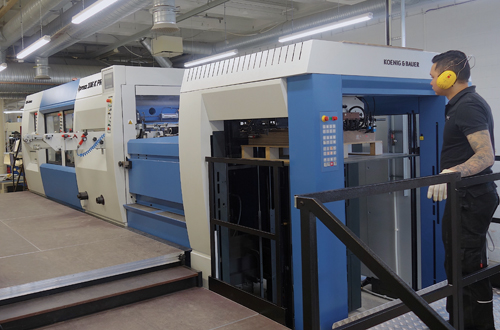
Local supplier
From a historical point of view, the background to Orapac is unusual and began when the neighbouring Mirka company, an international manufacturer of cleaning products and tools for the industrial market, became dissatisfied with its existing supplier of packaging and asked Orapac if it could do better. The working partnership that was struck up has endured and grown to the benefit of both parties. It provides Orapac with regular business and cashflow, and Mirka with reliable onsite production and instant call-off from the adjacent warehouse. Many years of experience and cooperation means that Orapac’s job planning to fulfil Mirka’s requirements creates an even workflow that balances any seasonal fluctuations in demand.
“There is no doubt that with both businesses being family owned a great synergy exists that improves day-to-day operations. We share an ERP system and by having our computers linked we can keep supplies at a pre-agreed level and guarantee delivery of 100% accurate boxes. We load into the shared warehouse and their forklift truck drivers take what they want when they need it – it’s very simple and very effective” he added. Aside from Mirka, most of Orapac’s output is for the international industrial markets, although an increasing level of business is being enjoyed from the drinks sector, while food packaging represents a relatively low proportion of turnover. According to Tidström, typical jobs fall in the 1000 – 30,000 box range, with 3,000 being a reasonable average. “It’s probably about 1000 sheets, so one and half pallets, which tells you how many job changes we do per shift. This is where simple and fast make-ready of the press and die cutters is so important,” he explained.
It is no coincidence that both Iberica and IOBox share the same longstanding distributor. Convertec, based in Partille, Sweden, has more than 30 years of experience as distributors of printing and conversion solutions in the Nordic graphic industry, representing a number of leading international manufacturers in the board, flexible packaging and label sectors. Speaking for the company, Managing Director Carsten Jensen commented, “As agents and distributors, we represent our customers first and foremost. With a broad network of contacts, good relations and a complete portfolio, we offer solutions that meet our customers’ needs and goals and are delighted to have enjoyed such a long working relationship with Iberica that continues under Koenig & Bauer ownership. Orapac is one of our earliest customers and to see its business grow and flourish is especially rewarding.”
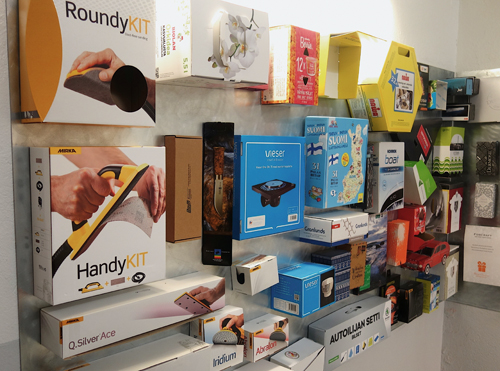
Fragmented layout
Next in-line for investment is a logistics system that will improve workflow in Orapac’s production facility. A beautifully preserved factory building that started life as a farm in the 1760s and was a textile plant in the late 1800’s, its multi-floored construction with many supporting pillars makes for a rather fragmented production layout, with die cutting on the ground floor. Tidström needs to find a way of automating the handling work-in-progress to allow him to re-deploy his staff to more productive tasks. The latest offset press was installed in an adjacent building and marks the first occasion that printing and converting have been separately housed at Orapac.
“We’re very conscious that the condition of the sheets on the pallets affects the performance of the production machines downstream. That’s why we try to stack-down for 24-36 hours after printing and aim for a maximum of 20% humidity in the printed stacks prior to die-cutting. If you can control the quality going in, you improve the consistency of the quality coming out, which is why we have invested heavily in humidifiers and other means of keeping the production environment at a constant level – not so easy in an older building!” he commented. The plant at Oravais currently operates a single shift pattern five days a week and according to Tidström, this was made possible by the extra efficiency of the two new die cutters and the new press. “We can now produce as much in one shift as we used to do in two – that’s progress – and highlights what new technology can do,” he said.
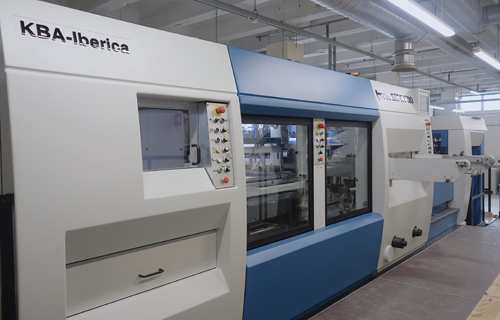
Industry recognition
A WorldStar Packaging award winner for its innovative and cost-effective design for Vieser One highlights Orapac’s capability from design to delivery. This industrial drainage product needed a pack design that was easy to assemble, attractive and allowed the consumer access to the product to feel its quality. In addition to winning an award, the pack was responsible for a significant boost in sales of Vieser One. The pack in question is just one of a number of clever designs that the company has created over the years for industrial products, which require a different thought process to that used for consumer products like food.
Looking from the outside, there is no doubt that Orapac is well set up and professionally managed, albeit with something of an unusual, if beneficial, relationship with its biggest customer. Where Tidström has been clever, is in spotting a niche opportunity and then defining the most efficient and cost-effective way of taking it. Any other company of this size might justifiably baulk at the thought of a €4m investment plan, but because of its unique commercial situation, Orapac can take full advantage and still have capacity to diversify its business into other markets – though you can be sure they will also be niche.
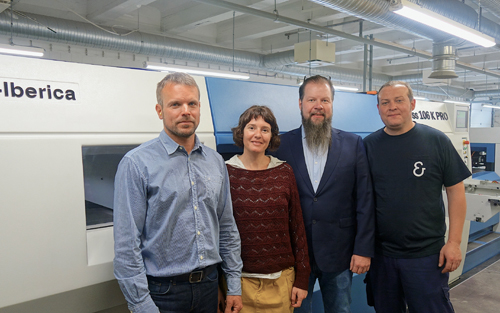
L to R: Fredric Tidström (CEO Orapac), Amanda Ràmia (Marketing & Communications Koenig & Bauer Iberica), Jan Vesterberg (Technical Sales Convertec) and David Liginfer (Service Instructor Koenig & Bauer Iberica).

